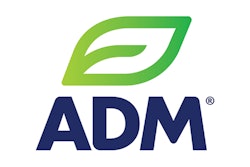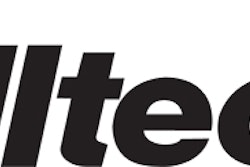
The year 2019 was a busy year for the pet food industry, driven largely by pet owners’ continued investment in the health and well-being of the dogs and cats in their care. Words like trust, confidence and education became commonplace in industry conversations, and trends such as transparency and sustainability rose to prominence. How will the pet food world navigate continued consumer scrutiny in 2020?
“We certainly saw an eventful year for U.S. pet food makers in 2019 and learned that regulatory messaging can impact consumer trust and create market-disrupting confusion,” said Dana Brooks, president and CEO of the Pet Food Institute. “We can all play a role in regaining consumer confidence in the coming year. Consumer and stakeholder engagement will be important in this regard. In an industry driven by nutrition science and providing consumer choice, today’s pet food makers have the opportunity to meet the changes of the previous year and strengthen the connection with pet owners.”
Quality: Consumers’ expanding focus on what’s best for their specific pets
The premium pet food market has seen plenty of growth in the last several years, as pet owners spend more time looking at labels and putting real thought into the types of things they want to feed their pets. That increased focus, in turn, has given rise to everything from superpremium options in specialty stores and “premium grocery” options in supermarkets to a wealth of breed-, lifestage- and health-specific formulas. Even beyond that, customization has become the name of the game for many pet food manufacturers, who now offer everything from tips on how to mix different types of pet food for a complete meal to delivery options catered to an individual pet.
“Consumers feel that what is good for them is good for their pets,” said Rebecca Casey, vice president of marketing and consumer market development at TC Transcontinental. “We [are seeing] the healthy eating trend spill over from pet parents to their pets’ diets. As pet food plays a vital role in animal health and well-being, pet owners are becoming more vigilant about the ingredients in pet food and treats. They are looking for pet food products that promote health and are made from natural ingredients.”
Beyond the all-encompassing force of pet humanization, economics plays a role in where pet food dollars get spent.
“Industry growth in 2019, attributed in part to higher disposable incomes and living standards in some markets, was a driving force for consumers to seek out more nutritionally balanced and higher quality pet foods and treats,” said Amy McCarthy, vice president of pet nutrition for ADM Animal Nutrition. “Beyond continued market growth, we are expecting consumers to demand even more variety and tailored solutions in pet food and treat offerings. For instance, consumers who own small breeds will expect products pre-portioned to fit the size of their pets.”
More options, while a double-edged sword in terms of consumer understanding (many customers report feeling overwhelmed in the pet food aisle while simultaneously asking for options that suit their specific pets), is currently the name of the game in pet food, and will continue to be so in 2020.
“Today, more than ever, food is in the mind of the consumer,” said Juan Gomez-Basauri, Ph.D., global director for Alltech’s companion animal business. “Not just as a source of nourishment, but as source of health for every member of their household including their pets. Newer formats perceived as ‘fresh’ will continue to show up. Soups, broths, freeze-dried, dehydrated, single or mixed with traditional dry or wet formats will all give consumers new choices. Customization will be part of these newer formats to addresses specific dietary needs, including support for the immune system, digestive system, cognition and to support a healthy heart.”
Sustainability: A trend at all levels of the pet food business
Sustainability was a true buzzword in the pet food industry in 2019, and those involved at all levels of the business seem to agree that it’s only going to be more of a focus in 2020.
“From a pet food packaging perspective, I expect one overarching trend in 2020, and that is the continued adoption of sustainable packaging materials for pet food products,” said William Kuecker, vice president of marketing, North America, for Mondi Consumer Flexibles. “The packaging industry has been aggressively developing a variety of sustainable options for pet food brands that will continue to deliver the freshness, convenience and outstanding appearance that recent Mondi/Dow consumer research demonstrates consumers are seeking. These options will also allow brands additional opportunities to reach their corporate sustainability goals and for consumers to feel that a brand is aligning with their ideals and aspirations.”
Naturally, pet food ingredients and the processes involved in making the food are starting to become more and more important to those types of consumers.
“The call for sustainable farming practices, standards around animal welfare and visibility to the product creation process will be important as pet lovers increasingly demand accountability and respect for the impacts food making has on the world around us,” said Don King, vice president of marketing for Champion Petfoods. “Pet lovers continue to connect the dots between the quality of the food and food ingredients they put in their [own] bodies and their quality of life. This same thinking will impact their pet food purchase decisions in the year ahead.”
Transparency is an unavoidable link to the sustainability trend, as the two quite often go hand-in-hand during discussions of where the industry is heading.
“Continued premiumization of the pet food business is an outcome of the link pet lovers believe is critical between food quality and their own health and wellness,” said King. “This consideration is paramount in their pet diet decisions because they believe the food they provide is the ultimate expression of the love they have for their dogs and cats. This will manifest as greater scrutiny of product labels and a quest for clarity and transparency around ingredients, sourcing, manufacturing processes and sustainability standards. The increased level of understanding and knowledge among pet lovers is astounding and evidence that they are making the effort to investigate the details of product creation.”
For the industry to be truly successful at meeting sustainability needs, according to experts, the science behind the efforts at all levels will have to be present and constantly evolving.
“Functional and nutritional claims to improve pet well-being are important to create brand differentiation,” said Gomez-Basauri. “Brand owners will be relying on proper scientific information; that is, science which is relevant to pets’ nutritional needs. Pet research can become quite expensive, but it is necessary for the pet’s benefit. Sustainability will continue to be part of the conversation, from upcycling to recycling, from sustainable packaging to sustainable ingredients, but the science behind these sustainable efforts needs to be there.”
The demands of pet owners in 2020
While the trends expected in 2020 aren’t exactly new to the pet food industry, they are gaining both ground and nuance, making it vital for those involved to stay on top of any shifts as the new year progresses.
“We expect consumers to be even more discerning in 2020 in terms of ingredients,” said Gary Davenport, Ph.D., companion animal technical manager for ADM. “They will look for novel ingredients and product forms tailored specifically for their needs. Some ingredients such as pulses, which previously were on trend, may fall out of favor as other ingredients like ancient grains and alternative proteins gain popularity. Increased demand for even higher quality pet food may contribute to a migration from traditional ingredient sourcing and manufacturing techniques.”
This diligence must be maintained at all levels of the process.
“Brands are working diligently today to understand the current and potential options for packaging and the ramifications that each has on appropriate labeling and branding, production efficiencies and consumer demand,” said Kuecker. “The packaging choices made in 2020 will impact brands for years to come.”
Overall, as pet owners shift their focus to wanting a relationship with their pets’ food choices, the companies coming out on top will likely be the ones to best acknowledge and cater to that fact. The current and upcoming generations of spenders have considerable say in where things are going.
“Positively impacting the market are millennial pet owners, who are willing to pay more for quality products, especially those featuring sustainably and ethically sourced ingredients,” said Casey. “Pet owners are interested in supporting pet food manufacturers that have demonstrated a commitment to social responsibility.”
As always, it pays to keep an eye on how pet owners view their relationships with their pets.
“[We continue] to see increasing reliable evidence and studies that confirm pet ownership has a direct and measurable impact on the health and wellness of owners,” said King. “This symbiotic relationship suggests the value proposition for pets in the household simply increases, and with it the demand for higher-quality food solutions and related products that impact pet wellness and longevity. Brands that take a holistic view of the pet lifestyle relationship will prosper and gain share as they become enablers of the desire pet lovers have to be inclusive with their pets in family life, rituals, special occasions and vacations.”
Read the companion articles: "2020 pet food trends: An international look" and "2020 pet food trends: Product possibilities."


















